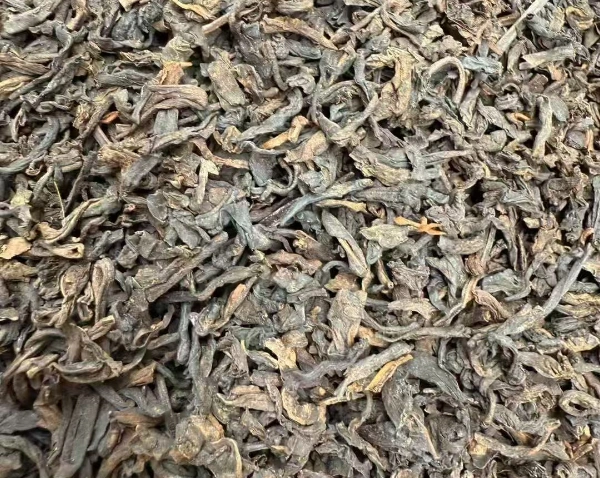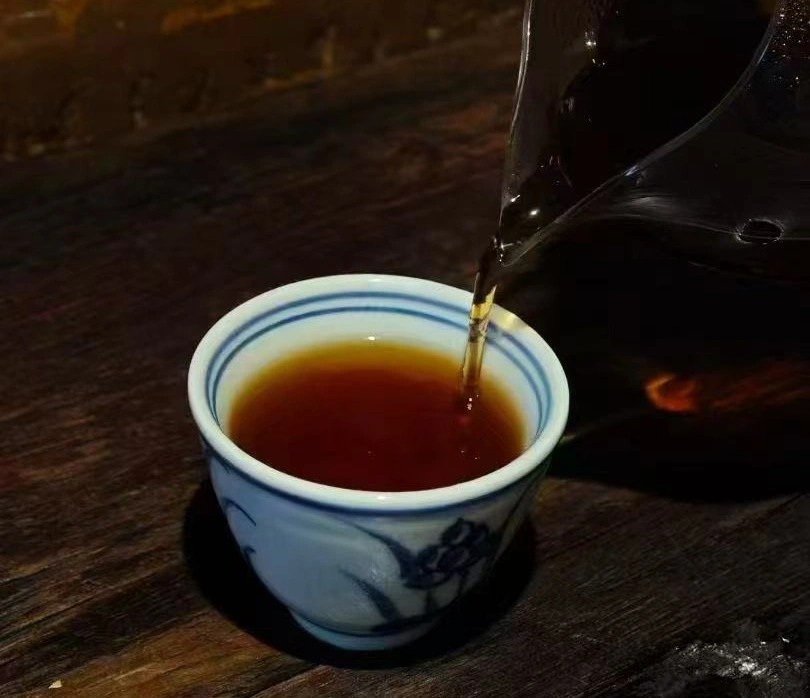Dark tea after oily meals is like a warm, earthy hug for your belly when you’ve indulged in rich, fatty fare. Imagine leaning back after a sumptuous plate of creamy pasta or crispy fried delights, and reaching for a deep amber cup that exudes fragrant steam. The aroma—smoky, woody, and gently sweet—whispers promises of relief. With that first velvety sip, you feel tension melt away: your gut settles, bloating fades, and digestion finds a soothing rhythm.
In this guide, we’ll explore why dark tea after oily meals is prized by tea lovers and wellness seekers alike, uncover its science-backed digestive powers, and share expert tips on brewing and enjoying this restorative ritual.

Why Dark Tea Works Wonders After Fatty Foods
When you feast on oily, heavy dishes, your digestive system faces a daunting task. Fats slow stomach emptying and can leave you feeling sluggish or bloated. Enter dark tea after oily meals, whose fermentation-derived compounds—like theabrownins, organic acids, and mild tannins—help:
- Emulsify fats, making them easier for your body to process.
- Balance gut flora, thanks to natural probiotics that support dark tea for gut health.
- Stimulate mild bile secretion, aiding in the breakdown of lipids.
This combination transforms a simple post-meal sip into a powerful digestive ally, helping you feel lighter, more energized, and ready to savor the rest of your day.
Understanding Dark Tea: From Leaf to Cup
Dark tea (Hei Cha) distinguishes itself through a unique post-fermentation and aging process:
- Withering & Rolling: Fresh leaves are gently wilted and rolled to release juices.
- Pile Fermentation: Leaves are stacked and turned in a warm, humid environment, allowing microbes to flourish.
- Drying & Aging: Teas are dried and stored in porous containers, where months or years of natural oxidation deepen flavor.
Through this alchemy, green catechins transform into theabrownins—compounds linked to dark tea digestion benefits. The result is a brew with deep mahogany color, earthy aroma, and smooth, rounded mouthfeel.
Key Post-Meal Benefits of Dark Tea
Dark Tea Digestion Support
One of the most compelling dark tea after oily meals attributes is its digestion support. Theabrownins and polyphenols gently inhibit carbohydrate- and fat-breaking enzymes, leading to:
- Slower nutrient absorption, avoiding sudden sugar or lipid spikes.
- Reduced gastric irritation, as tannins bind excess acids.
- Improved peristalsis, fostering smoother gut motility.
This makes every cup a comforting balm for a tummy that’s just tackled rich cuisine.
Dark Tea for Gut Health
Beyond immediate relief, dark tea after oily meals nourishes your microbiome. Natural fermentation leaves behind beneficial microbes—like Bacillus subtilis—that colonize your intestine, contributing to dark tea for gut health by:
- Enhancing microbial diversity, a marker of robust digestion.
- Producing short-chain fatty acids, which fuel colon cells and reduce inflammation.
- Strengthening the gut lining, protecting against “leaky gut” and food sensitivities.
With regular sipping, you cultivate an internal ecosystem primed for balanced digestion.
Dark Tea Post-Meal Benefits Explained
When you choose dark tea after oily meals, you tap into a spectrum of benefits:
- Bloating Relief: Organic acids help release trapped gas and calm intestinal spasms—ideal after greasy bites.
- Stabilized Energy: Lower caffeine content than coffee offers gentle alertness without jitters or crashes.
- Antioxidant Boost: Theabrownins and polyphenols combat free radicals generated during fat metabolism.
- Liver Support: Some studies suggest fermented dark tea compounds aid liver enzymes in processing lipids.
Together, these effects make dark tea the go-to companion for any indulgent feast.

Dark Tea vs. Oolong Tea: Which Suits Oily Meals Better?
Oolong teas, with their floral nuances and moderate oxidation, shine as everyday brews. Yet after a heavy, oily meal, dark tea after oily meals steps beyond oolong’s grace:
- Deeper fermentation: Yields more theabrownins and organic acids for fat emulsification.
- Stronger earthy backbone: The rich mouthfeel feels more grounding against fatty textures.
- Milder caffeine: Less likely to aggravate sensitive stomachs than some robust oolongs.
That said, pairing a light oolong earlier can complement a dark tea finale—offering a harmonious bridge from floral brightness to earthy closure.
How to Brew Dark Tea After Oily Meals
Optimal Brewing Method
- Water Temperature: Heat to 95–98 °C (203–208 °F).
- Tea Quantity: Use 5 g of loose dark tea (about one teaspoon per 120 ml water).
- Rinse: Briefly flush leaves with hot water for 5 seconds to awaken fragrance and remove impurities.
- First Steep: Brew for 2–3 minutes, then enjoy.
- Subsequent Infusions: Add 30 seconds per steep—most leaves yield 4–5 flavorful brews.
Timing Your Tea
- Wait 10–15 minutes after eating to sip. This pause lets your stomach work through initial breakdown before extra fluids arrive.
- Space subsequent cups over the next hour to maintain gentle digestive stimulation without overfilling.

🔗 To learn more about how to make tea, check out Tanbiwencha’s YouTube video explaining how to make tea.
Recommended Dark Teas for Greasy Food Recovery
- Shou Pu-erh (Ripe Pu-erh): Fully fermented, with lush chocolaty notes and smooth finish—ideal for novices.
- Aged Liubao Tea: Guangxi specialty; malt-sweet profile and soothing temper.
- Hunan Hei Cha: Smoky accents that cut through richness, delivering bold digestive relief.
- Dark Oolong Hybrids: For oolong lovers, these marry floral hints with fermented depth.
Seek teas with clear origin, fermentation date, and reputable producers to ensure authentic dark tea after oily meals quality.
Incorporating Dark Tea into Your Meal Routine
- Weeknight Dinners: Keep a small tea tin on your kitchen counter; whisk up a quick pot after cooking.
- Restaurant Visits: Order a pot of ripe Pu-erh alongside your curry or stir-fry to preempt digestion woes.
- Office Lunches: Pack a travel infuser mug for dark tea after oily meals, turning your break into a soothing ritual.
- Family Gatherings: Elevate post–holiday feasts by serving dark tea—it’s as much about convivial comfort as digestion.
Common Mistakes to Avoid
- Drinking Too Soon: Immediately after eating, extra liquid can dilute stomach acids—wait at least 10 minutes.
- Oversteeping: Exceeding 5 minutes can yield bitterness and overwhelm your senses.
- Boiling Water: A full boil (100 °C) can scorch delicate flavors—aim just below boiling.
- Low-Quality Leaves: Cheap, dust-grade teas lack beneficial compounds for dark tea digestion support.
Expert Tips & Reader FAQs
Q: How many cups should I drink after a heavy meal?
A: One to two cups spaced over 30–60 minutes offers optimal relief without overloading your stomach.
Q: Can children enjoy dark tea after oily meals?
A: For ages 12+, use half the recommended leaf amount and a shorter steep (1–2 minutes) to reduce caffeine.
Q: Does sweetening dark tea reduce benefits?
A: A touch of honey or rock sugar won’t negate digestion support, but avoid dairy or heavy sweeteners that counteract emulsification.
Conclusion: Embrace Dark Tea as Your Post-Meal Ritual
When sumptuous feasts leave you feeling weighed down, make dark tea after oily meals your secret weapon. From the delicate plume of steam to the rounded, earthy finish, each cup is a testament to centuries-old craft and modern digestive science. By mastering brewing techniques, timing sips mindfully, and selecting quality leaves, you’ll transform post-meal discomfort into a moment of sensory pleasure and wellness. Let the rich embrace of dark tea become the crowning jewel of every meal—your ultimate digestive ally.



